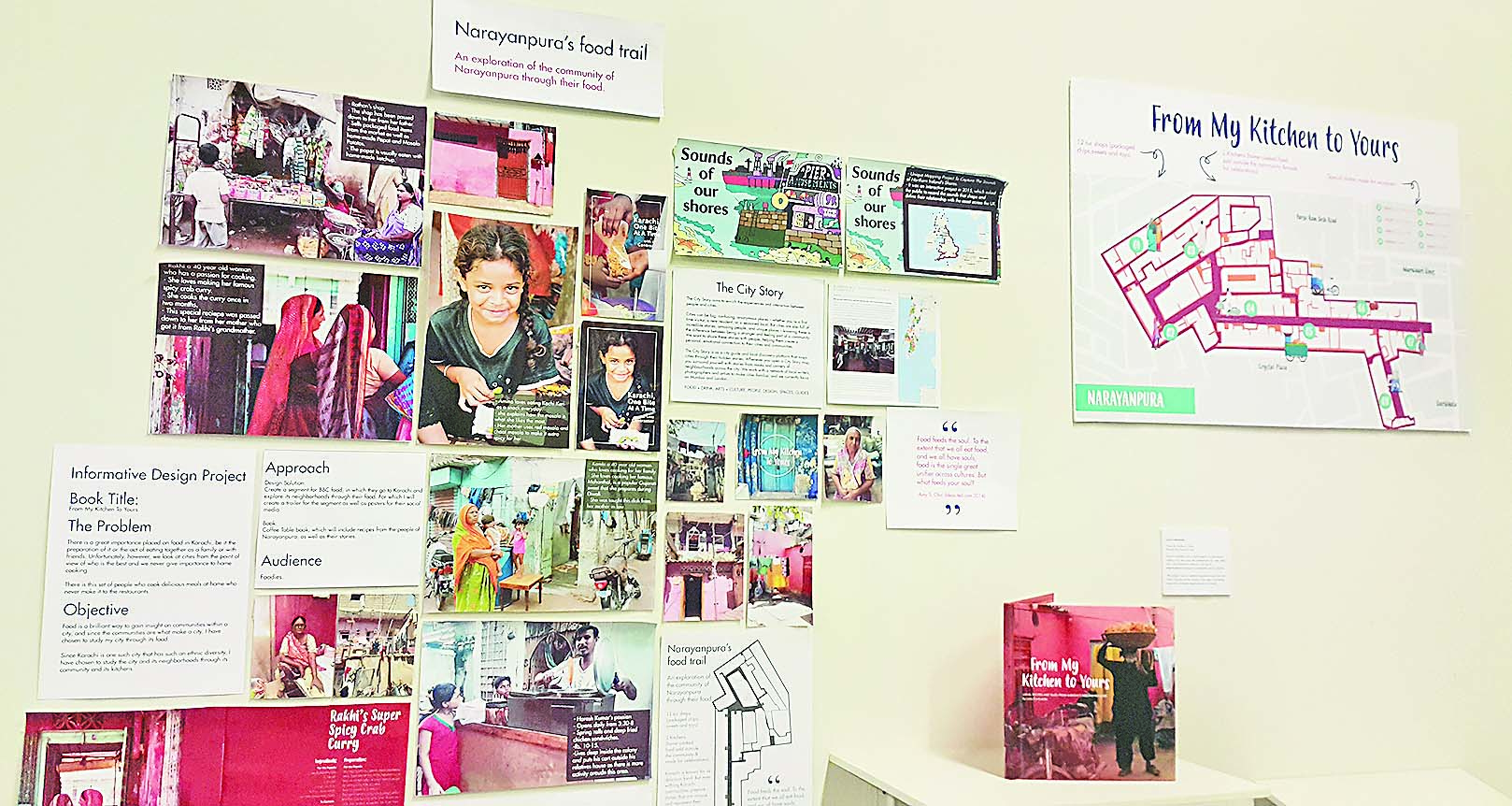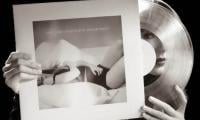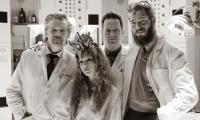Using various design methods, students of Indus Valley School of Art and Architecture devised solutions for problems identified in five specific areas of the city, as part of a six-week project titled ‘Reading the city’.
Course instructors Madiha Aijaz and Alifiya Halai asked students of the Communication Design programme to explore areas namely Cantt Station, Narayanpura, Urdu Bazaar, Empress Market and Bohri Bazaar.

Assigned the Cantt Station, Manal Sohail focused on the rights of passengers. Usually found to be clueless in case of a delay or a loss of belongings among other inconveniences. Her solution was to create awareness by writing down the rules clearly in brochures for the travellers.
Another student, Mansoor Makba, who was also assigned the Cantt Station realised that children often played near the railway tracks - a trend that has claimed lives of many a children as well as adults.
“I made a monochromatic animated series alongside a small brochure which narrates the story of a kid, Saad. His friend while playing cricket too close to the track gets stuck on it while attempting to fetch the ball. As a train approaches, Saad manages to save the friend just in time but scolds him for taking the risk,” he explained.

Makba added that if a copy of the brochure is handed out to everyone with the ticket many would understand the grave consequences and refrain from sending children near the track.
Exploring Narayanpura, Leea Contractor emphasised on the area’s diverse food scene. She compiled a book of recipes to be shared on a future online blog.
Dania Kidwai, who surveyed the Empress Market, compiled a book to make city dwellers aware of the variety of fresh vegetables available in the area, since they are often sold in supermarkets at higher prices.
“Many people don’t know that exotic herbs, spices and vegetables can be easily found at the Empress Market. Before the advent of supermarkets, people of all strata visited the place but now only a certain group buys grocery from here. My book comprises of the details of the goods available here so people would head to these areas and buy fresh items,” Dania said.
Another student, Maham Ismail used oral history to preserve the stories of those living above the shops in Bohri Bazaar.
“We believe that design can be used to respond to civic or social problems, hence, we chose areas which involved a lot of public interaction of city dwellers,” Madiha explained.
She said that although it was not possible to change the place physically, these design could help people navigate or access the place by providing viable solutions to some of the problems.
“For instance in Urdu Bazaar, we all know that there is virtually no place to park cars. The students mapped out the area and marked places which can help people identify parking spots during a rush hour. The Urdu Bazaar press association has agreed to publish the maps so the solutions offered by the students aren’t short lived,” she said.

She added that the students were asked to study the dynamics of the area by studying literature, newspaper stories and features or even films.
Speaking about the difficulties faced by students, Madiha said that owing to the apparent class division in society, they were hesitant at first but after frequenting the areas the people and the students both got comfortable with each other.

“It was encouraging to see them step out of their comfort zones restricted to malls or certain places and interact with people.”
“Another aim behind the project was to explore the city’s diversity much of which has been eroded following a process of Islamisation. Many have detached themselves from history and have turned away from the past which wasn’t monotheistic in nature. They have forgotten that communities like Christian, Hindus and Parsis have contributed a lot to the heritage,” she pointed out.
Madiha hoped that the efforts of students in identifying roads and landmarks would increase people’s knowledge about the city and its history.

An aerial view of Karachi city. — AFP/FileCelebrating ShakespeareThe National Academy of Performing Arts is...
The University of Karachi entrance gate. — APP/FileThe University of Karachi will host the launch of a book written...
This collage of images shows, Sindh Minister for Information Sharjeel Inam Memon , Barrister Gohar and President...
The Cantonment Board Clifton building located in Karachi. — CANTONMENT BOARD CLIFTON Website/FileSignificant...
Workers repair the high voltage wires on a pole on February 20, 2024. — Online K-Electric removed 350 illegal...
The Sindh High Court building. — SHC website/FileThe Sindh High Court on Friday directed the city administration to...







